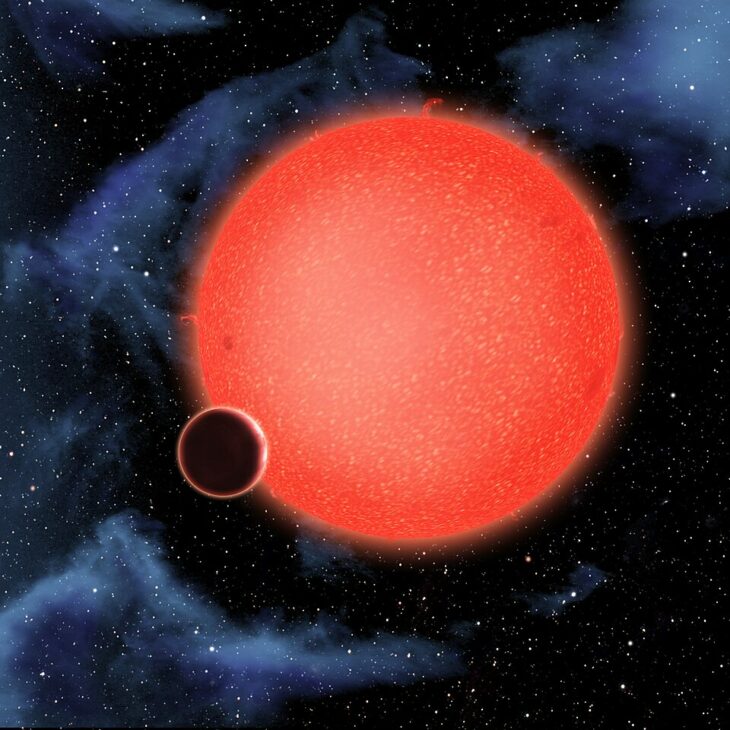A driving motivation in modern astronomy is the search for extraterrestrial life. All living things on Earth require water. So, scientists extrapolate that to find Earth-like life elsewhere, they need to find water in space. Scientists have found that the cosmos has quite a lot of water, and sometimes in unexpected places. They’ve discovered frost in calderas on Mars, plumes of water spewing from Saturn’s moon Enceladus, and even water worlds around other stars.
But exoplanets with water don’t necessarily resemble Earth. One common type of exoplanet, called a sub-Neptune, has a radius 2 to 4 times that of Earth, but usually much more gas and ice in its composition. Researchers have calculated the densities of sub-Neptunes and found that they can have vast interior layers composed of water surrounded by a hydrogen-helium shell. This structure is unlike Earth, which has a thin layer of surface oceans and large pockets of subterranean water.
On top of this difference, scientists have found some sub-Neptunes that are close to their stars and therefore have a high equilibrium temperature. These exoplanets are too hot to sustain layers of liquid water. Instead, they have a steam atmosphere over a layer of water suspended in a state between liquid and gas, known as supercritical.
Gas and supercritical fluids take up more volume than liquid, so these steam worlds are puffed up relative to colder sub-Neptunes. They have bigger radii that are sensitive to temperature, such that they contract if they fall farther from their host star and expand if they fall closer. Scientists in the past made computer models of steam worlds, but their results were inconsistent, as they ignored either the effects of contraction or the exoplanet’s age.
To get a more accurate picture of these steam worlds, a team of scientists from the US and the UK created a dynamic simulation based on the existing exoplanet GJ 1214b to see how it changed over 20 billion years. Their model planet was a little less than 7 times Earth’s mass, a bit more than 3.3 times Earth’s radius, and with an equilibrium temperature of 540°F or 280°C, orbiting around a red dwarf star. They divided the model planet into 5 distinct layers: an inner iron core, lower and upper mantles of different mineral composition, a high-pressure ice layer, and an outer fluid water envelope.
To track how the temperature of their steam world changed over time, they tracked not its outermost layers, but its interior. For planets with chemicals in their outer layers that can be vaporized by the Sun, the interior temperature can be hotter than expected because gases in the atmosphere can trap more heat than what escapes into space. This is why the surface of Venus, the second closest planet to the Sun, is hotter than that of Mercury, the closest planet to the Sun.
The team found that their model exoplanet generally cooled and shrank over time. Its radius started out over 3.3 times that of Earth’s, with an interior temperature starting close to 1,300°F or 700°C. In less than 10 million years, the exoplanet’s radius shrank to 2.9 times Earth’s with an interior temperature of 260°F or 130°C. After 100 million years, its radius was down to 2.7 times Earth’s with an interior temperature of -190°F or -120°C. Finally, after 20 billion years, the model planet’s radius was only 2.6 times Earth’s, and its interior was as cold as -400°F or -230°C.
The end result was an exoplanet that was smaller and with a colder interior than previous models of water-rich sub-Neptunes had predicted. But it hadn’t lost any mass, which meant that everything there had been densely compressed. The denser planet had less vapor in its outer layer. In addition, its inner ice layer underwent a chemical transition from ice to cold plasma and a state of matter with both liquid and solid properties known as superionic ice.
The team acknowledged that their model did not necessarily reflect real-world sub-Nepunes, since they assumed that the steam world’s water layers were pure water. They’re more likely to have chemical impurities along with an outermost shell of hydrogen gas and helium. However, they claimed these results could help exoplanet researchers better understand sub-Neptunes as a whole, because they point to a possible relationship between a sub-Neptune’s radius, its density, and the age of its host system. All 3 properties are currently being studied with ongoing missions, including JWST and Gaia.


